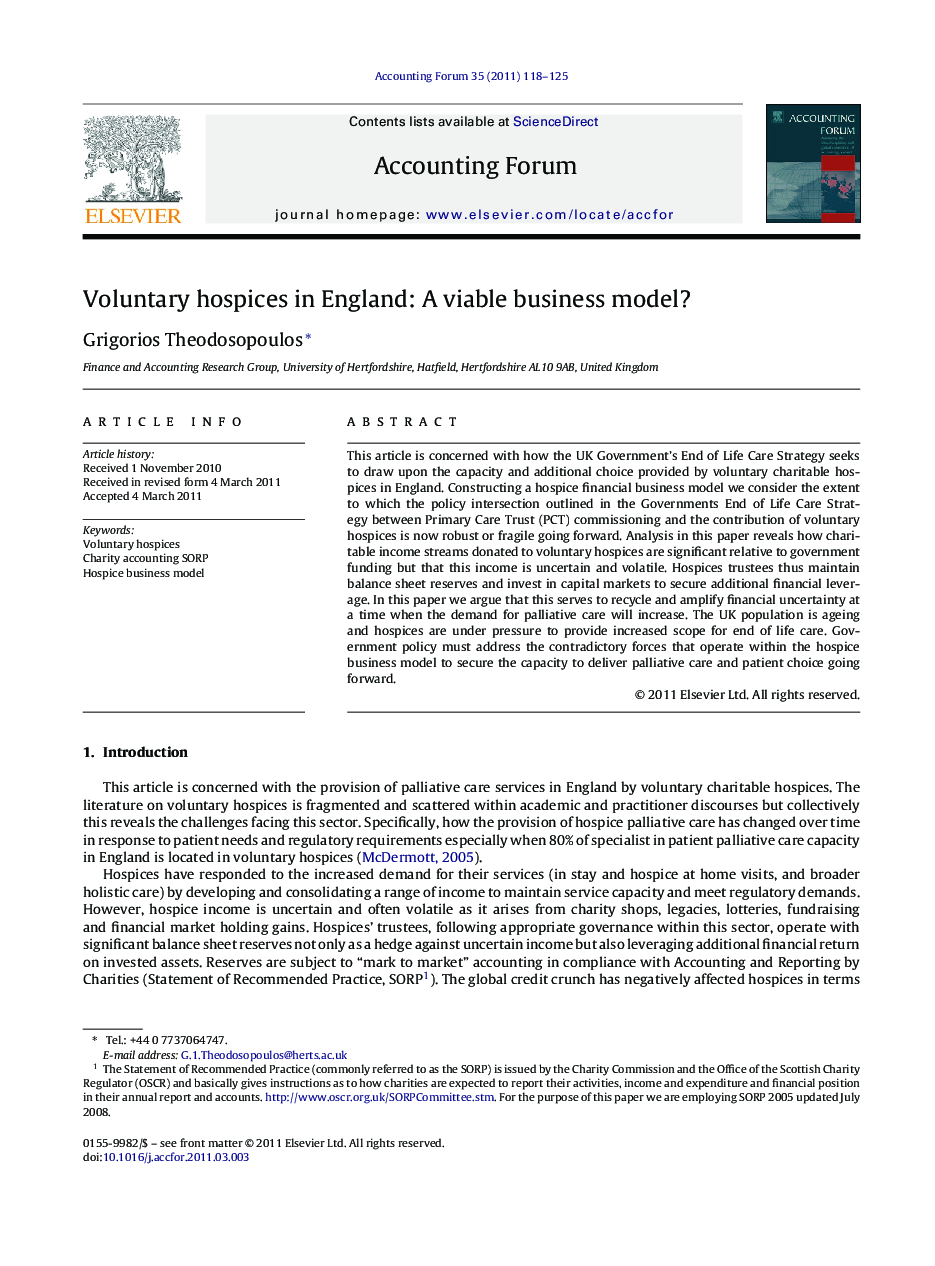| Article ID | Journal | Published Year | Pages | File Type |
|---|---|---|---|---|
| 1003810 | Accounting Forum | 2011 | 8 Pages |
This article is concerned with how the UK Government's End of Life Care Strategy seeks to draw upon the capacity and additional choice provided by voluntary charitable hospices in England. Constructing a hospice financial business model we consider the extent to which the policy intersection outlined in the Governments End of Life Care Strategy between Primary Care Trust (PCT) commissioning and the contribution of voluntary hospices is now robust or fragile going forward. Analysis in this paper reveals how charitable income streams donated to voluntary hospices are significant relative to government funding but that this income is uncertain and volatile. Hospices trustees thus maintain balance sheet reserves and invest in capital markets to secure additional financial leverage. In this paper we argue that this serves to recycle and amplify financial uncertainty at a time when the demand for palliative care will increase. The UK population is ageing and hospices are under pressure to provide increased scope for end of life care. Government policy must address the contradictory forces that operate within the hospice business model to secure the capacity to deliver palliative care and patient choice going forward.
► This article is concerned with the provision of palliative care services in England by voluntary hospices. ► Published hospices financials under SORP are used to construct a hospice business model. ► The sustainability of this business model is evaluated in the face of anticipated challenges. ► The state-voluntary sector policy intersection depends on the stability of the hospice business model going forward. ► The key argument is that the hospice business model is financially stressed putting future service provision at risk
